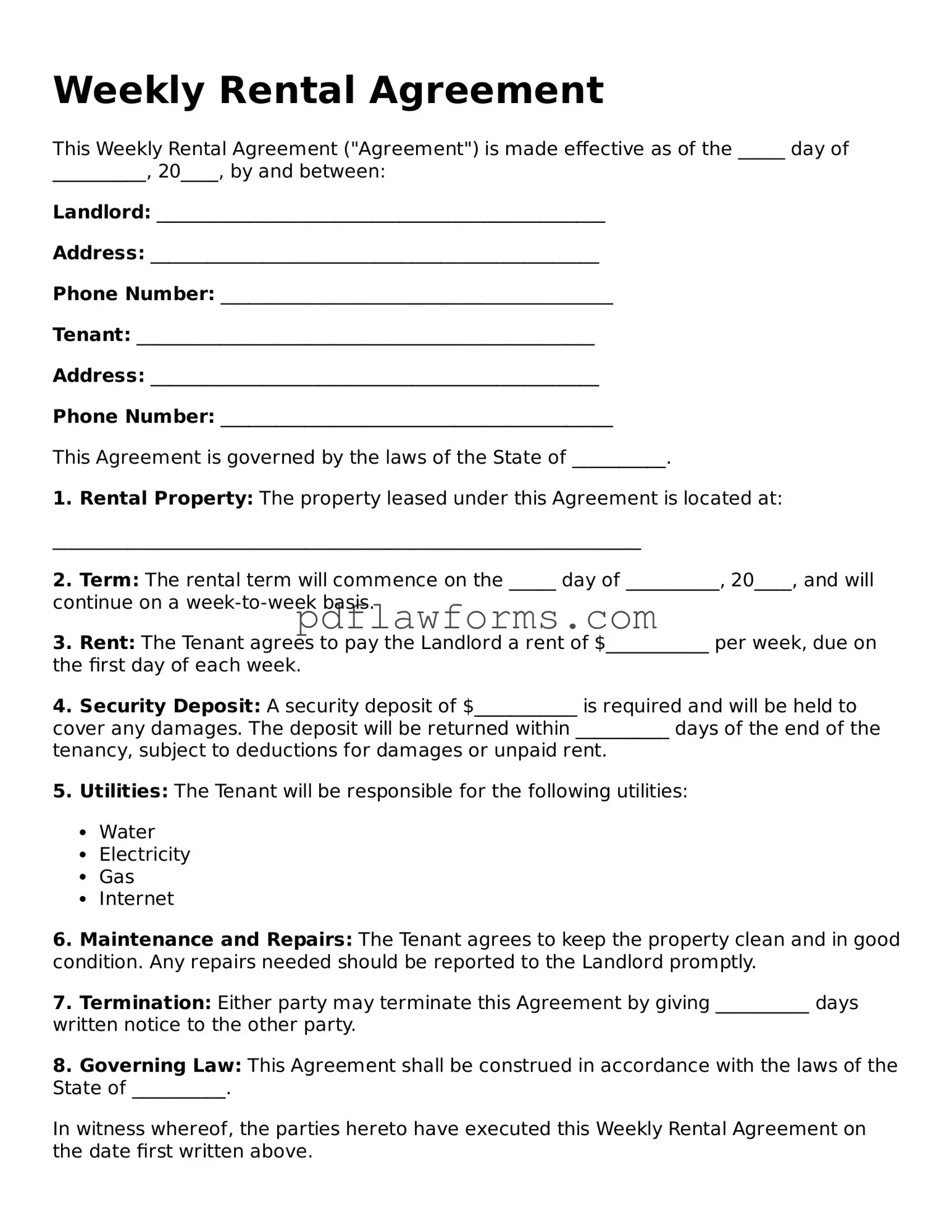Completing a Weekly Rental Agreement form can seem straightforward, but there are common mistakes that many individuals make. One frequent error is failing to provide accurate personal information. This includes names, addresses, and contact details. Inaccuracies can lead to complications down the line, especially if communication becomes necessary.
Another common mistake is neglecting to read the terms and conditions thoroughly. Many people skim through the agreement without understanding their responsibilities or the landlord's expectations. This oversight can result in disputes later, particularly regarding payment schedules and maintenance responsibilities.
Some individuals forget to specify the rental period clearly. The start and end dates should be explicitly stated to avoid confusion. If these dates are left ambiguous, it could lead to misunderstandings about when the rental agreement begins and ends.
Additionally, not including the total rental amount is a mistake that can create significant issues. It's essential to outline the total cost of the rental, including any additional fees or deposits. This ensures both parties are aware of the financial obligations involved.
Another error is overlooking the signature section. Both the landlord and tenant must sign the agreement for it to be legally binding. Without signatures, the document may not hold up in a legal context, rendering the agreement unenforceable.
Some people also fail to keep a copy of the signed agreement. After filling out the form, it’s crucial to retain a copy for personal records. This can serve as proof of the terms agreed upon should any disputes arise in the future.
Lastly, individuals often forget to discuss and document any additional agreements or special conditions verbally agreed upon. If there are unique terms that differ from the standard agreement, these should be included in writing. Failure to do so can lead to misunderstandings that could have been easily avoided.
